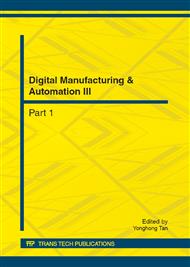p.496
p.500
p.504
p.509
p.513
p.517
p.522
p.528
p.534
Mechanical Properties of the Cracked Thick Aluminum Plate Repaired with M40J/Epoxy Composite Patch
Abstract:
To extend the service life of the equipment, a novel, efficient and cost-effective method is used to recover the damaged component of the equipment. The mechanical properties of unidirectional M40J/epoxy composites, prepared by molding process, were studied. Then the centre-cracked thick LC52CS aluminum plates were single and double side repaired with the composites patches by vacuum bagging technology in which three cure cycles were applied. Results show that a low cure temperature induce a small thermal residual stress. Choosing the cure cycle with the highest tensile strength of single-side repaired specimens, the tensile strength of single-side and double-side repaired specimens enhance 31.50% and 47.29% of that of the unrepaired specimens, respectively. And fatigue life of the double-side repaired specimens extends that of the cracked aluminum plate over 76 times, which is also significantly better than that of the single-side repaired specimen.
Info:
Periodical:
Pages:
513-516
Citation:
Online since:
July 2012
Authors:
Keywords:
Price:
Сopyright:
© 2012 Trans Tech Publications Ltd. All Rights Reserved
Share:
Citation:


